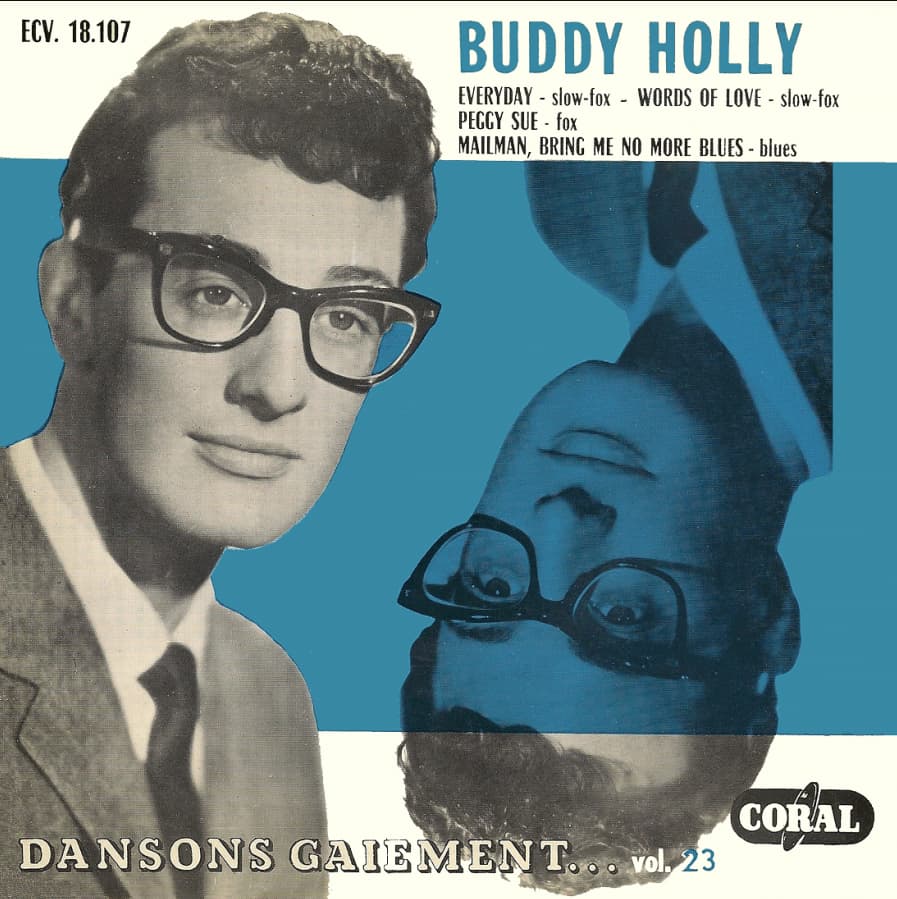
Capturing Simplicity: An In-Depth Look at Buddy Holly’s Timeless Classic “Everyday”
“Everyday” is a song that embodies the charm and simplicity of the late 1950s, crafted by the legendary Buddy Holly and Norman Petty. Released on September 20, 1957, as the B-side to the hit single “Peggy Sue”, “Everyday” quickly captured the hearts of listeners, climbing to number three on the Billboard Hot 100 chart that year. Despite its initial release as a secondary track, the song has stood the test of time, earning a place at number 238 on Rolling Stone magazine’s list of the “500 Greatest Songs of All Time.”
The recording of “Everyday” is notable for its minimalistic yet innovative use of instruments and sounds. Buddy Holly‘s gentle acoustic guitar strumming provides the backbone of the song, while the Crickets’ drummer, Jerry Allison, contributes a unique percussive element by rhythmically slapping his knees. This inventive approach to percussion gives the song a distinct, intimate feel that resonates with listeners. Adding to this simple yet effective arrangement is Joe B. Mauldin’s standup acoustic bass, which grounds the melody with its deep, resonant tones. Norman Petty, the producer and co-writer of the song, adds a touch of magic with the celesta, an instrument whose ethereal, bell-like sound complements Holly’s tender vocals perfectly.
At its core, “Everyday” is a song about the universal experience of waiting for love and the hope that grows stronger with each passing day. Holly’s earnest delivery of the lyrics, coupled with the song’s upbeat tempo and catchy melody, creates an atmosphere of optimism and warmth. The simplicity of the song’s arrangement allows Holly’s voice and the heartfelt message of the lyrics to shine through, making it a timeless piece that continues to resonate with audiences.
The production of “Everyday” is a testament to the innovative spirit of Buddy Holly and Norman Petty. Their ability to create a rich, textured sound with minimal instrumentation set a new standard for music production in the 1950s and beyond. The song’s enduring popularity is a reflection of its ability to evoke a sense of nostalgia while remaining relevant to new generations of listeners.
In the context of the late 1950s music scene, “Everyday” stands out for its unique blend of simplicity and sophistication. While many artists of the time were experimenting with elaborate arrangements and electronic effects, Holly and his collaborators chose to focus on the fundamentals of songwriting and performance. This approach not only distinguished Buddy Holly as a pioneering artist but also ensured that “Everyday” would remain a beloved classic for decades to come.
Today, “Everyday” is more than just a song; it is a reminder of the enduring power of simple, heartfelt music. Its place in the pantheon of great American songs is well-deserved, and its influence can be heard in countless recordings that followed. As we listen to Buddy Holly‘s gentle voice and the unmistakable sound of the celesta, we are transported back to a time when music was a pure expression of emotion, and the world seemed a little bit brighter every day.